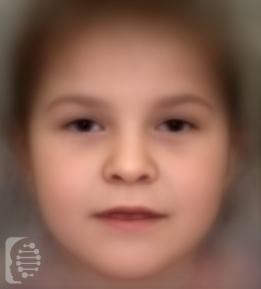What is Chromosome 2q37 Deletion syndrome?
Chromosome 2q37 Deletion syndrome is a rare genetic syndrome that presents with a wide variety of syndromes and a number of unique, identifying facial features.
The main features of the syndrome affect the bones in the fingers and toes of affected individuals, scoliosis (curvature of the spine), and short stature.
It has been identified in around 100 people worldwide.
This syndrome is also known as:
Albright Hereditary Osteodystrophy-like Syndrome; Brachydactyly-mental retardation
What gene change causes Chromosome 2q37 Deletion syndrome?
Deletions to the DNA material on chromosome 2 cause the syndrome, specifically in q37 region. The condition is not inherited and is the result of a random occurrence.
In some cases, a genetic syndrome may be the result of a de-novo mutation and the first case in a family. In this case, this is a new gene mutation which occurs during the reproductive process.
What are the main symptoms of Chromosome 2q37 Deletion syndrome?
The main symptoms of the syndrome are variable, according to the size of the deletion and the deletions of different genes.
Brachydactyly type E, is one of the main characteristics of the syndrome. This is when the bones in the fingers and toes are shortened. It may also present with hypermobility of the joints, and a short stature.
Other common features may include mild to moderate intellectual disability, behavioral issues, scoliosis, and unique facial features.
Possible clinical traits/features:
Aplasia/Hypoplasia of the eyebrow, Abnormal palate morphology, Abnormality of the metacarpal bones, Abnormal aortic morphology, Aggressive behavior, Attention deficit hyperactivity disorder, Self-injurious behavior, Autism, Broad face, Brachycephaly, Broad nasal tip, Multicystic kidney dysplasia, Muscular hypotonia, Nephroblastoma, Anteverted nares, Intellectual disability, Arrhythmia, Laryngomalacia, Joint hypermobility, Pain insensitivity, Short palm, Frontal bossing, Upslanted palpebral fissure, Midface retrusion, Short metacarpal, Short metatarsal, Abnormal hair quantity, Tracheomalacia, Sleep disturbance, Supernumerary nipple, Congenital onset, Macrocephaly, Microcephaly, Round face, Umbilical hernia, Somatic mutation, Subvalvular aortic stenosis, Pyloric stenosis, Finger syndactyly, Malar flattening, Downturned corners of mouth, Conductive hearing impairment, Brachydactyly, Deeply set eye, Eczema, Clinodactyly of the 5th finger, Congenital diaphragmatic hernia, Broad columella, Malformation of the heart.
How is it diagnosed?
To find out if someone has a diagnosis of Chromosome 2q37 Deletion syndrome, it is important to have a consultation and evaluation with a clinical genetic specialist. Specialists may also suggest specific genetic testing or other types of tests to help reach a diagnosis. FDNA’s AI technology can help speed up the diagnostic process by analyzing facial features and other health information.

